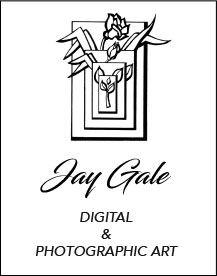Where Was This Picture Taken?
From the time that George Eastman introduced the inexpensive Kodak Brownie camera in 1900 the world has accepted the photograph as a way of visually documenting beauty and ugliness of all kinds. Especially in the twenty first century, when virtually everyone has become a photographer through the use of cell phone cameras and social media, photography has in many ways replaced the written word as a way of recording history- personal history, family history, and the history of mankind.
Even as I write this blog is difficult to do without photographs as a way of demonstrating my point. However, it is this very lengthy history of photography as a documenter of reality that has interfered with the photograph becoming accepted as an art form.
When people see some of my Gestalt Visions digital art usually the first question is “where was that taken?” Their initial expectation is that this piece of art must be a documentation of a place, and if they can just know where it was taken it will make the photograph more meaningful to them.
I thank you for that compliment to my work, for that is partially the intended response. I want you to look at my art, not just glance at it. Your mind, working on a logical level is trying to fill in the Gestalt and make sense of it. Your eyes stare at the colors and the shapes and your mind tries to put a name to it. But if you look it it long enough hopefully your mind shifts from the where, who, and what level to just enjoying it as a piece of art – a happening. So please excuse me if I don’t answer your question. It is not that I am being rude or a temperamental artist-I just don’t want to ruin the experience for you.
When you look at the Mona Lisa, is it important to know what city has Da Vinci painted in the background? Not only is it not important, but if you turn the visual experience into an intellectual exercise you miss the beauty of the painting.
Photographic art is not about, where, who, and what. Snapshots are about where, who and what. Photographic art does not document history – it exists in a separate, beautiful world. The beauty is not in the where, the who or the what, it is in the mind of the artist and the eyes of the viewer.
That is where my photos were taken. In the creative recesses of my mind.
